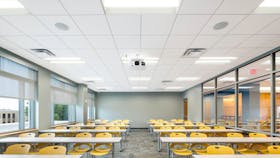Program Overview:
Architects, Specifiers, Interior Designers, and Building Science Professionals all have a long history of specifying stone wool for their insulation and sound absorption needs. Stone wool acoustical ceiling tiles demonstrate exceptional performance in areas such as noise reduction, fire resistance, humidity and sag resistance, mold and mildew resistance, all while enhancing indoor environmental quality. This presentation will discuss and explain in detail the origins of stone wool, as well as the key features and benefits of stone wool acoustical ceiling tiles. The information will be supported by relevant industry standards and test results to ensure safety, performance, and quality.
Learning Objectives:
- Understand the necessity of suspended acoustic ceilings and recognize the common materials utilized in suspended ceiling solutions.
- Examine the origins of stone wool and analyze the general composition of stone wool ceiling tiles.
- Evaluate the key performance attributes of stone wool, analyze relevant industry standards, and test methods, and interpret the corresponding stone wool test results
- Explore the design attributes of stone wool acoustical ceiling systems.
Credits: USA: AIA, IDCEC, USBGC CANADA: AAA, AIBC, OAA, EPP (ALBNL, AANB, NSAA)
Length: 1 Hour
There is no cost to bring this program into your firm or chapter meeting.
Schedule your lunch and learn
To sign up, please click the below button.







